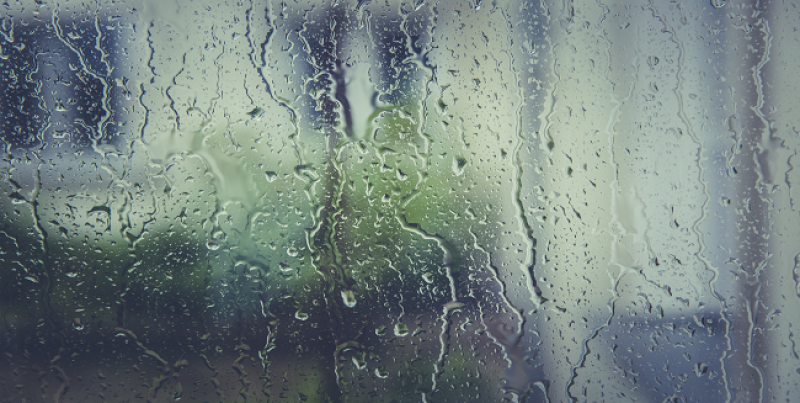What is Condensation
Condensation is formed due to the lack of ventilation in your home when there is an opposite of temperatures on each side of the window. Therefore, in winter months when it is cold outside, and you have the heating on inside, there is likely to be condensation on the windows.
Excessive condensation can cause dampness in your home, which can then lead to mould growth on walls, furniture, clothes and other fabrics. It can also lead to the rotting of wooden window frames. Damp humid conditions provide an environment in which house dust mites can easily multiply. The presence of mould and dust mites can make existing respiratory conditions, such as asthma and bronchitis, worse.
Look for condensation in your home. It can appear in or near windows, in the corners and in or behind wardrobes and cupboards. Condensation forms on cold surfaces and places where there is little movement of air.
How to Remove Mould
To kill and remove the mould, there are several different detergents you can use. Fungicidal washes and sprays are readily available at local supermarkets. However, sometimes these cleaners are not strong enough to treat a severe case of mould and bleach often does a better job of removing the mould.
In areas where possible, soak the contaminated area in bleach for several hours before thoroughly rinsing down. Make sure the detergents you use carries a Health and Safety Executive (HSE) Approval Number and ensure you follow the instructions.
Use a professional dry cleaning service to remove mould from clothes and other fabrics. For mouldy carpets, shampoo or professional carpet cleaners should be used. Do not try and remove mould by using a brush or vacuum cleaner.
After treating the mould, redecorate using a good quality fungicidal paint and a fungicidal resistant wallpaper paste to help prevent mould recurring. The effect of fungicidal or anti-condensation paint is destroyed if covered with ordinary paint or wallpaper.
It’s key to remember that the only lasting cure for severe mould is to get rid of the cause – the dampness.
What Causes Condensation
There are four main factors that cause condensation:
- Too much moisture being produced
- Not enough ventilation
- Cold surfaces
- The temperature of your home
Moisture Produced in the House
Our everyday activities add extra moisture to the air inside our homes; even breathing. To reduce and control condensation, you need to ensure less moisture is going into the air inside your home. If possible hang your washing outside to dry. If you’re unable to put your washing outside, hang it in the bathroom with the door closed and a window slightly open or extractor fan on. Don’t be tempted to put it on radiators. If you use a tumble dryer, make sure it is vented to the outside or that it is of the new condensing type. Always cook with the pan lids on and turn the heat down once the water has boiled. Ensure your extractor fan is on when cooking as this will extract any extra moisture that is created. When filling your bath, run the cold water first then add the hot as it will reduce the steam by 90%. Try to avoid using bottled gas heaters as they produce approximately 8 pints of moisture from an average-sized gas cylinder.
Ventilation of the Home
Not enough ventilation in the home causes condensation. There are many steps that you can add to your daily routine to help ventilate your home.
Hours of cooking and simmering hot stews for a cold winter’s day produces copious amounts of heat and moisture that gets released into your home. This heat travels around your house and if there is nowhere for it to be released, it becomes trapped in walls, windows and wooden fittings. Many homes will have an extractor fan in the kitchen; making use of this can make your house a lot less humid. Ensure the internal doors are closed to prevent extra moisture escaping into the rest of the house.
When showering or taking a bath, aim to ventilate the room for approximately 20 minutes after use by opening the window. Again, if you have one, ensure the extractor fan is always used.
To reduce the risk of mould growth on clothes and other stored items, allow air to circulate around them by leaving the wardrobe doors and cupboards open during the day. Never overfill wardrobes and cupboards as it restricts air circulation.
As bizarre as it sounds, do make sure there is a gap of a couple of inches between your furniture and your walls. This allows the air to flow around the room. If you do not leave an adequate space, the air could condense into your walls, causing mould and eventually cracks in the plaster.
Cold Surfaces in Your home
Condensation forms more easily on cold surfaces in the home such as walls and ceilings. In many cases, those surfaces can be made warmer by improving the insulation and draught proofing. Insulation and draught proofing will also help keep the whole house warmer and will cut your heating bills. When the house is warmer, condensation becomes less likely. Loft and wall insulation is the most effective forms of insulation.
If you install any draught proofing observe the following guidance:
- Do not draughtproof rooms with a condensation problem, or where there is a heater or cooker that burns gas or solid fuel.
- Do not block permanent ventilators or airbricks installed for heating or heating appliances.
- Do not draughtproof bathroom or kitchen windows.
The Temperature of Your Home
Warm air holds more moisture than cooler air which is more likely to deposit droplets of condensation around your home. Air is like a sponge; the warmer it is, the more moisture it will hold. Heating one room to a high level and leaving other rooms cold makes condensation worse in the unheated rooms. Therefore it means that it is better to have a medium to a low level of heat throughout the whole house.
Keeping the heating on at low all day in cold weather will help to control condensation, but keep a check on your meters to check how much it is costing.
If you have a heating system, such as underfloor heating, but are afraid to use it because you’ve been told it is expensive to run, please contact the Energy Efficiency Advice Centre (EEAC)* for an advice guide on how to control your system. You may find that it costs less to run than you expect or have experienced in the past.
If you don’t have heating in every room, keep the internal doors of unheated rooms open to allow heat into them. To add extra heat to a room without any form of installed heating, it is better to use electric heaters, for example, oil-filled radiators or panel heaters, on a low setting. Remember you should not use portable bottled gas heaters in homes suffering from condensation as they give out copious amounts of moisture whilst in use. Contrary to popular belief, it is actually cheaper to heat a room with on-peak electricity than by using bottled gas heaters.
Be careful not to ‘over-ventilate’ your home when it is cold, as it will cause the temperature inside to drop and make condensation more likely. It will also increase your heating costs. If you think that the heating or heaters installed in your home are insufficient to give enough heat to combat condensation, please contact your landlord to enquire about the possibility of an improvement to your heating.
If you have a chronic medical condition and require extra warmth, you might wish to contact your landlord to enquire about the procedure for obtaining a medical referral for heating improvement.
To see what you can do relatively cheaply on a DIY basis; ring the Energy Efficiency Advice centre for a copy of “It’s Criminal to Waste Energy – A Guide to Saving Cash and Energy in the Home.”
For information on how to run heating systems economically please contact 0800512012 or visit www.energysavingtrust.org.uk.
Key Things to Remember
- Reduce the amount of moisture you are producing
- Improve ventilation
- Reduce the number of cold surfaces in your home
- Maintain an adequate temperature









